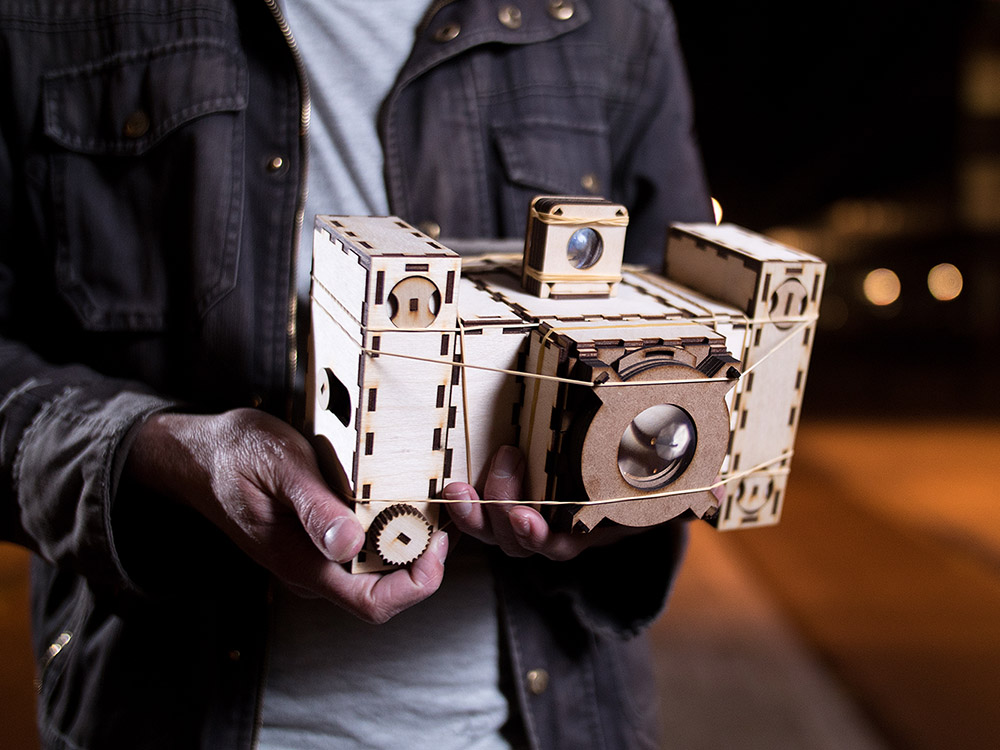Mathijs van Oosterhoudt
The Focal Camera 2015
'The Focal Camera' is a workshop that takes a critical look at how cameras are constructed and how design choices influence not only our usage of them, but also the photos they create. It exposes the social and political bias present in a tool we take for granted.
Mathijs van Oosterhoudt [NL] is an artist that engages critically with the political landscape of media, exploring the direct and indirect social and cultural influences of invisible technology. His works present such exploration through various ways of participation and interaction.


File:TheFocalCamera_Promo4_SMALL_4x3.jpg File:Gradcat-1-2.jpg File:Rop9.jpg File:Gradcat-2.jpg
The Focal Camera is a project that takes a critical look at how cameras are constructed and how design choices influence not only our usage of them, but also the photos they create. Tools and technology are by no means objective as often thought, but rather subjective, as they are created by people. With that comes a certain social and political bias. The way it is shaped and the way it works amongst others change our perception of said technology and thereby the end-result. Considering the importance of photographs in the image culture we live in, it becomes a necessity to understand such a bias: The choices made by inventors, designers, engineers and executives throughout the history of the camera undoubtedly changed our way of thinking of photography and imagery, but almost always goes unnoticed or unremarked.
Driven by the need for profit in order to compete with various other companies, their choices might not always be what we would want or desire, in a way creating a capitalistic camera: A camera first and foremost to be sold, not used. Furthermore, most of today's cameras' principles are based on those of the first thirty to forty years of cameras made. The mirror in a contemporary SLR camera even stems from that of the camera obscura. While DIY solutions were an option in the past, it has become increasingly hard to understand the current camera, which is a necessity to subvert it. 'The Focal Camera' tries to aid this subversion, whilst exposing and changing the bias that exists within the camera.
In a two-day workshop participants learn the underlying principles of the parts that make up a camera and are exposed to this critical view. They build their own shutters, focusing mechanisms, viewfinders and lenses, intermittent with discussions on the camera's inherent problems. To go through such a large amount of technical knowledge, specific modules are designed ahead of time: Small model kits that each consist of a specific function. The assembly of such a kit makes it easy to understand how it works, but still gives the user the freedom to make a large amount of choices. The modules can be combined with each other in various ways, creating unique cameras that would otherwise not exist, much like a camera prototyping system. Meanwhile, the ability to produce homemade objectives opens up an array of aesthetic choices. The second day of the workshop is aimed at using the camera, developing film and making prints with easily accessible material, found in any supermarket.
These modules range from more classical functions such as that of an aperture or shutter, but also consist of more unique designs such that of a RGB splitter, which allows the creation of color photographs with black and white film (Something that might become important with the slow demise of color film). The designs, instructions, workshop dates and theory can all be found online where participation is welcome.

